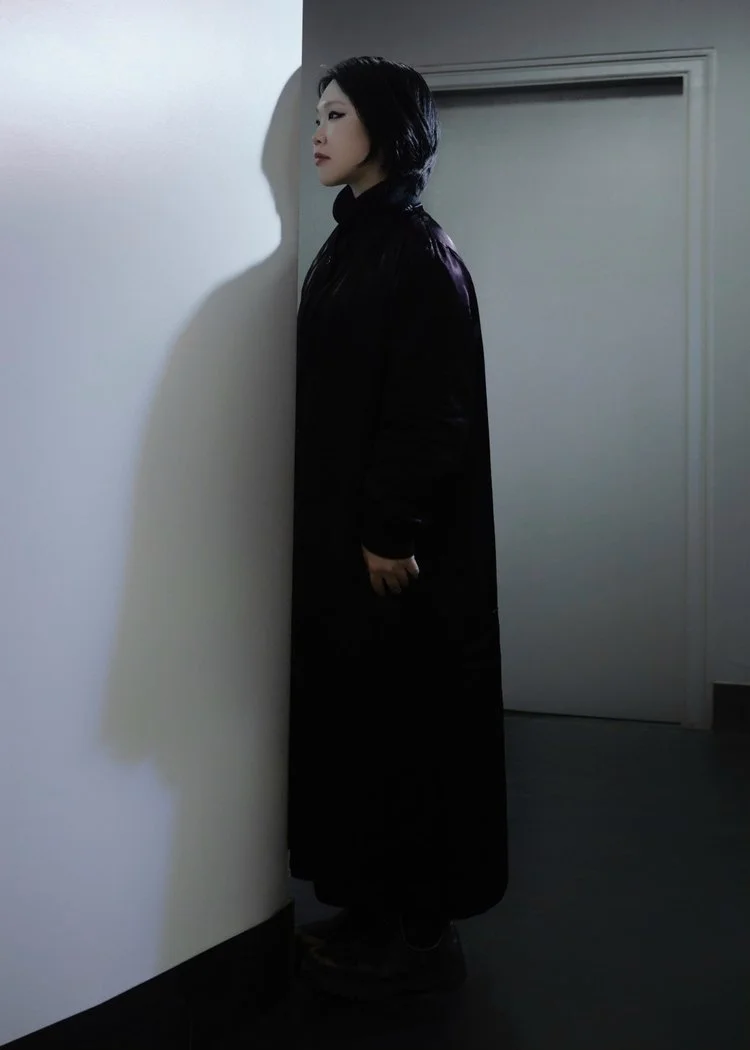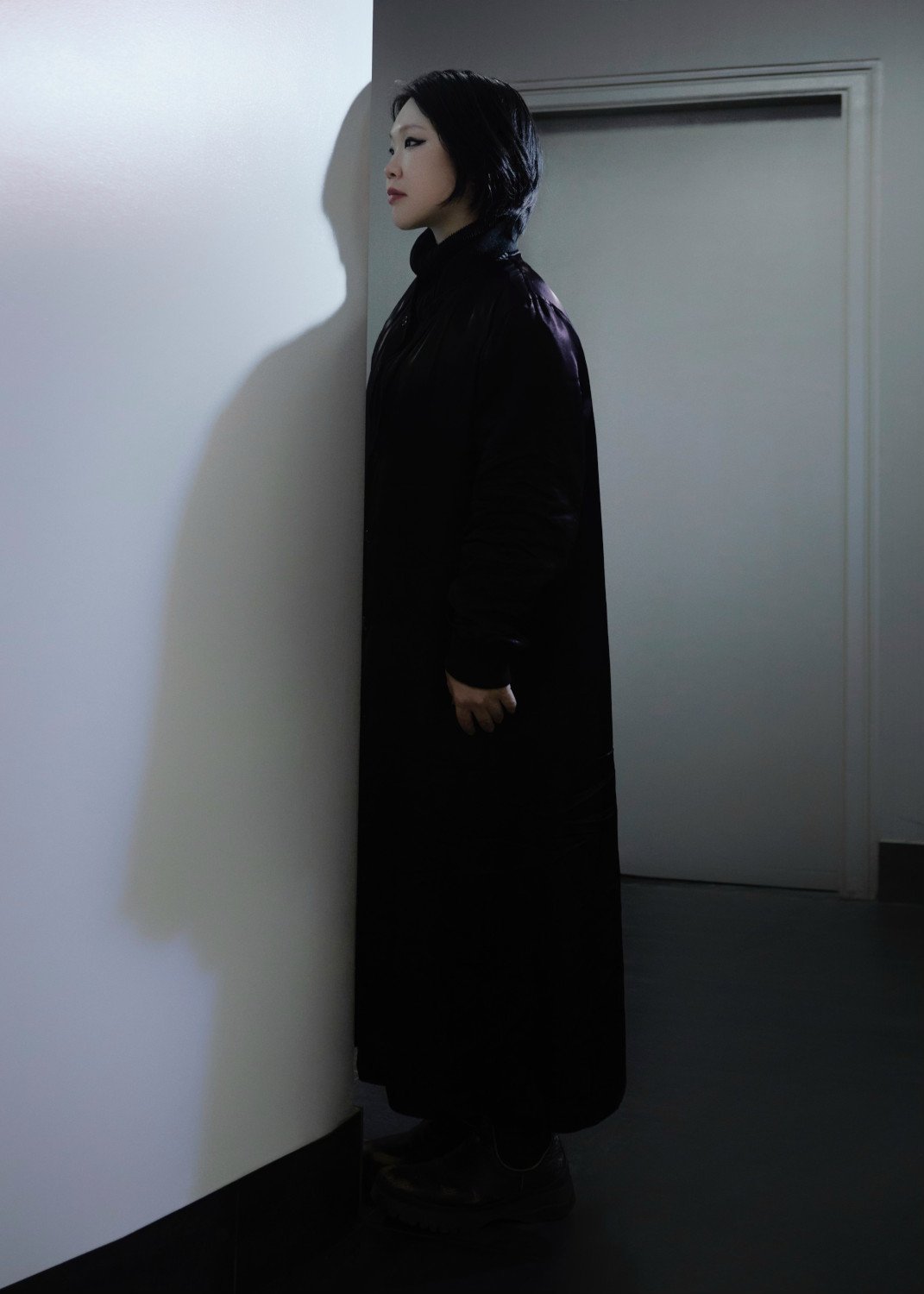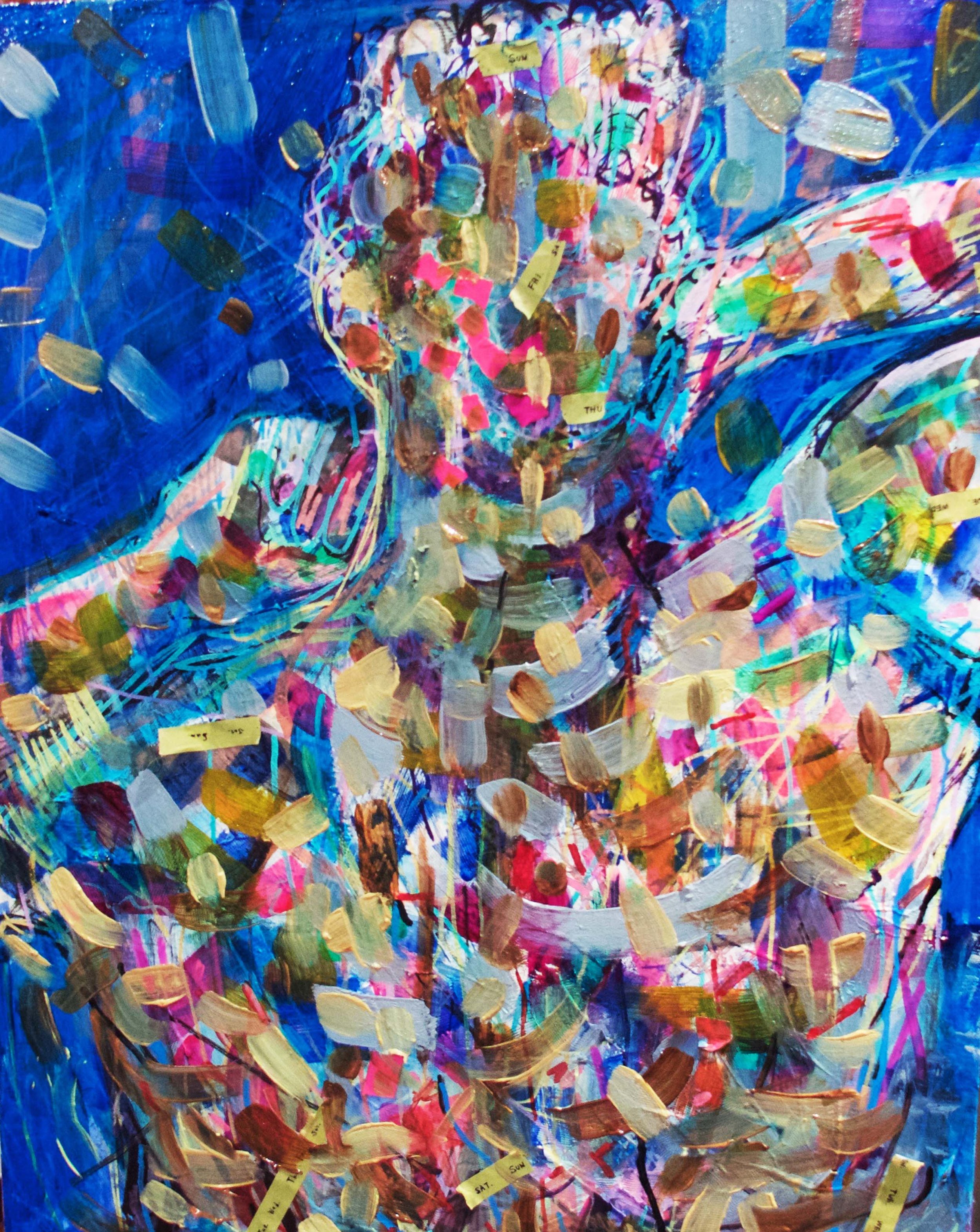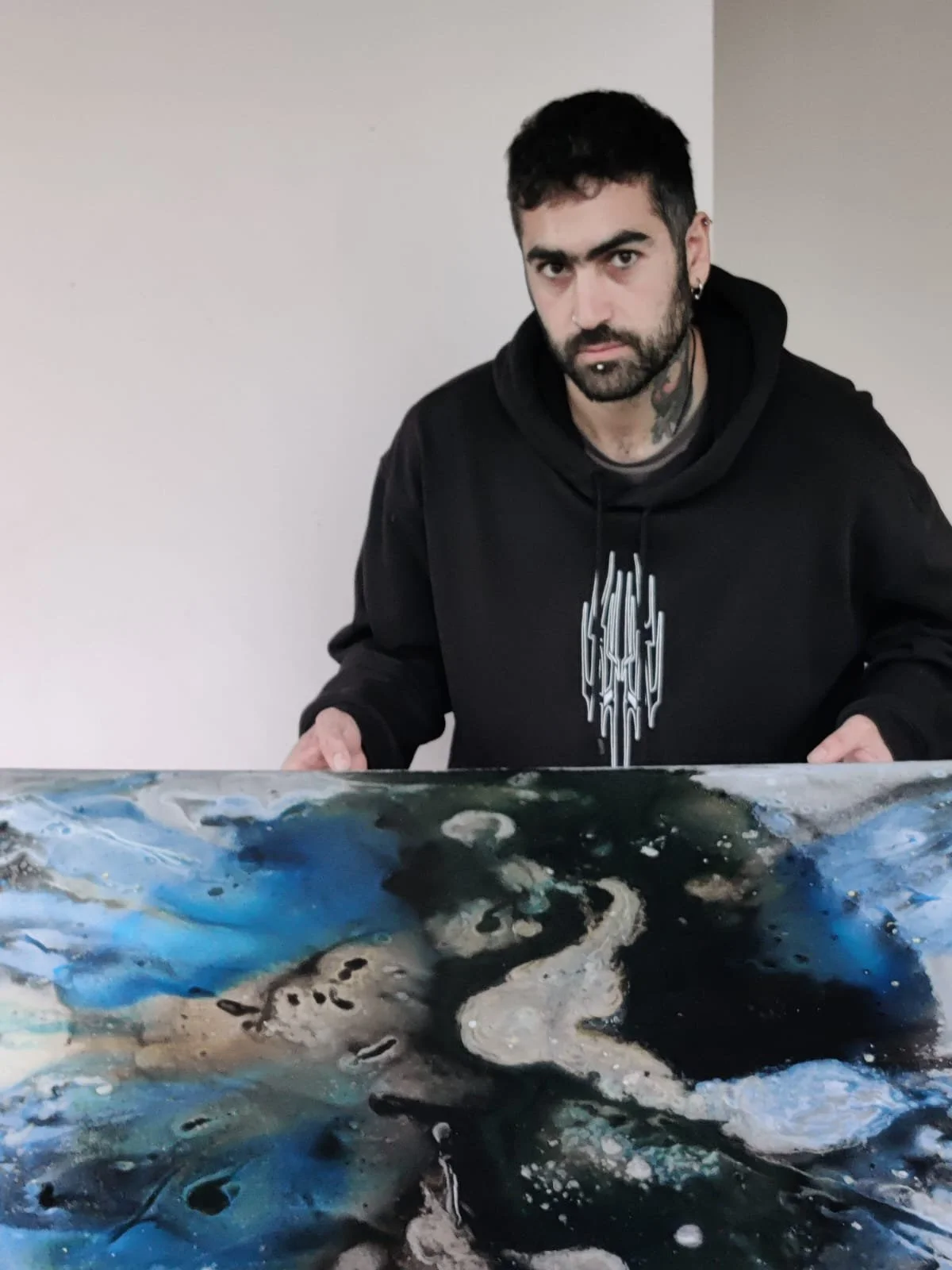10 Questions with Haewon Jang
Born and raised in Korea, Haewon Jang studied in Japan from a young age and has been mesmerized by Japanese culture and novels. She lived in Japan, reading many Japanese cultural works and novels. Moreover, admiring the animations of Miyazaki Hayao, she wanted to study animation in Japan and went to an animation school there. Studying Japanese animation, she craved to learn more about Japanese design and colors and went to a Japanese design university. To learn more professional graphic design and illustration, she also went to a Korean graduate school and wrote a thesis. After graduation, she is now in New York to pursue a career in art
yourhelenaportfoliothingsth-blog.tumblr.com | @blackxx25_blackxx
Haewon Jang - Portrait
ARTIST STATEMENT
“I pursue contemporary and indie art, and my artworks stem from my prior experiences, feelings, and philosophical thoughts around life and death. My illustrations demonstrate the differential effects of emotions throughout an individual’s stages of life, including suffering and celebrations. Personal life matters, and complex relationships with friends, family and society affect people’s lives in indescribable and intangible ways. As an immigrant who has traveled across different parts of the world, I lacked belongingness and came across many hardships and challenges, but I eventually became accustomed to living a nomad life. My illustrations are reflections of one’s complicated feelings and incomplete life journeys. I am motivated by drawing and weaving versatile feelings and thoughts together using symbols and colors. My illustrations portray rocks, stones, people, and the environment, the ocean. The history behind rocks goes back centuries: rocks represent the foundation of life, and they have existed since the very beginning of the earth. They can be heavy and rigid but also stable and immutable.
For instance, being stuck underneath heavy rocks is a presentation of diverse stress factors and hardships that weigh down people’s lives. Additionally, in Buddhism, after the cremation of monks or followers, Buddhist relics, sari, crystal, or pearl-like small stones appear. These stones serve as a legacy of the person and an outcome of the Buddhist’s life-long journey. Although faith requires believing without seeing, sari tangibly shows the level of one’s endurance, hardships, and meditation to others, and this results stage only comes after death. Ironically, people cannot observe their own sari. Ocean represents a bottomless pit, the world of the unknown, and an endless horizon. There are numerous possibilities and the fear of not having a boundary exist. Take a moment to let everything pass, drop the heavy rock, and recover and celebrate life.” - Haewon Jang
Stone 01, Pen, watercolor, photoshop, 2238x1699 px, 2022 © Haewon Jang
Limited edition art collectors’ book
INTERVIEW
First of all, why are you an artist, and how did you become one?
When I was a child, I read a book on famous paintings from my mother's bookshelf. I was mesmerized by Van Gogh's self-portrait with his decapitated ear. At that time, I was too young to read the descriptions, so my mom told me how Van Gough came to draw such a painting. After listening to my mother's story, I wanted to become an artist with a story like Van Gogh. When I was five years old, I received many painting awards, and the people around me complimented my drawing skills, so I thought I would like to continue painting.
What is your aim as an artist?
I want to keep making art and communicate with many people. Celebrities and novelists succeed over long obscurity, but artists have no ambiguity. Very few artists become famous by continuing to struggle, creating paintings and artworks, and promoting them through galleries. Hence, many people quit art because it is difficult to endure that long period. I also want to become an artist who does not stop painting and continues to make new attempts.
How would you define yourself as an artist?
I believe that an artist sees and interprets various aspects and makes their ideas into works. I am very different from the person I portray in my artwork. People see me as always limited, but I think I have a variety of personalities when I see myself in my art. I also think of myself as a candid artist who expresses the various characters and emotions I feel at that time, like a news reporter.
The Augustus, Oil on printmaking paper, magazine paper, tape, gesso, 53x46 cm, 2019 © Haewon Jang
In order to express the diverse thoughts and psychology of not one but many people, the image presents two faces attached together. The eyes, nose, and lips were not drawn so that the viewer cannot distinguish the facial expression. The painting expresses extreme anxiety.
Fervor, Oil on canvas, Hanji and magazine paper, 53x46 cm, 2019 © Haewon Jang
The anxiety, fear, and surprise of a person watching another person die is expressed together with the death of a person. In order to convey the anxiety of the shaking eyes, all forms were expressed in curves.
Where do you get inspiration for your works? What sources and mediums do you use?
I am usually inspired by Oscar Wilde's books, New York galleries, and bikes on New York streets. I also like to express the optical illusion seen in the bottle I now have an eye problem. When my eyesight is not bright, people look blurry. I also struggle with my ears sometimes. I express the agony and loneliness caused by the illnesses in my work. I mainly use digital art, oil painting, paper collage, pastels, acrylic paints, markers, and pens.
What is your creative process like? And how did you evolve this way of working?
At first, when I was attending a university in Japan, a professor I was not familiar with saw me and asked me to be the teaching assistant to high school students during the summer. Being his teaching assistant was peculiar; he asked me to suddenly go to a Japanese cave, take a candle, and draw a self-portrait. He also gave me gasoline for the car to draw with. I learned while working for him that there is no limitation to the materials I can use for my work. I've been told that if I draw anything and express it, it becomes a work of art, so I think I've been freed from the obsessive-compulsive feeling that my work should be completed with traditional materials.
What aspect of your work do you pay particular attention to?
I'm a compassionate person, and if I don't like something, I keep making new drafts and fixing them until I like them. I'm particularly strict about color, but if the color I want doesn't come out, I make my pigment powder until the color I think is coming out. I think it's important to find colors that other people probably don't think of.
Stone 03, Pen, watercolor, Photoshop, 2238x1699 px, 2022 © Haewon Jang
Is there a piece you consider a "breakthrough" in your career?
This is the work of The Augustus that I drew for my graduate work. I exhibited it in graduate school, and someone who liked the painting asked me to sell my work. At that time, I wanted a leather croquis notebook which was expensive, and he offered to buy me an image at that price. So I was happy that the artwork was sold at a reasonable price, and I think I got the opportunity to sketch ideas for the picture while I continued to use the leather notebook.
What do you think about the art community and market? And how did your perception change over the last years due to the pandemic?
When many artists had fewer opportunities to exhibit their work during the pandemic, many artists and writers had to make a living by making a living in a profession other than their own. With the change in the technological era, I think that there has been a significant change in artists as they exhibit their works online, various artists and non-artists efficiently complete their pieces with computers, and artists in multiple fields jump into the metaverse and NFTs. I didn't seem to be able to draw many jobs during the pandemic. I also tried to exhibit through an online gallery, but in the back of my mind, I strongly thought I should communicate my work to the audience by displaying my work through the gallery in person.
The prosopagnosia, Printed paper, Swingline Stapler, Printmaking paper. News paper, Post it paper, Tape, 220x280 mm, 2019 © Haewon Jang
The prosopagnosia, Tape, Pen, Permanent maker, Water-based pen, Oil color, 220x280 mm, 2019 © Haewon Jang
What are you working on now, and what are your plans for the future? Anything exciting you can tell us about?
Currently, I am doing works based on the themes of my pieces on stones and humans. I am studying to create a new job with epoxy resin, a new technique. I think it is interesting that this technique can copy various objects and pieces. I want to make a sizeable artificial stone out of epoxy resin and display it in the exhibition hall. I am also into VR video, and I'm thinking of making a video work related to technology. It seems that the top interest these days is the metaverse and NFTs. At first, I was skeptical at the thought that anyone could make a lot of money by selling works, but I think the metaverse is the one that will open up new art that is most needed in the modern era.
And lastly, what are your goals for 2022?
Even in 2023 and the year after that, even if there are significant obstacles and challenging things in life, my goal is not to give up, even if it is not easy to keep drawing. I also plan to open an exhibition in Williamsburg in mid-August.
























